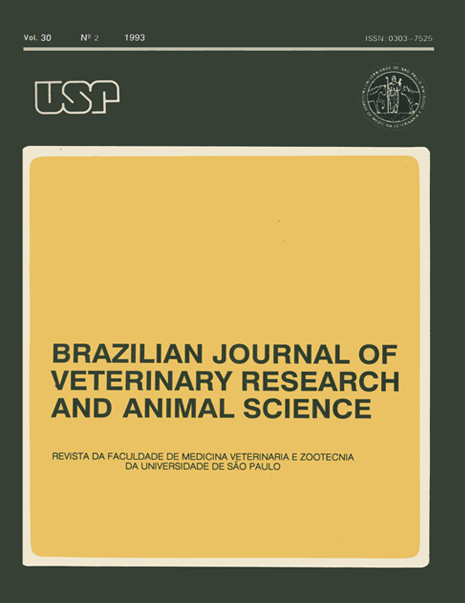Fresh and artificially dried forages ruminal degradability. I. Elephant grass (Pennisetum purpureum Schum) and colonião grass (Panicum maximum Jack) degradabilities through "in situ" dacron bags in rumen fistulated steers
DOI:
https://doi.org/10.11606/issn.1678-4456.bjvras.1993.52029Keywords:
Forrage (digestibility), Panicum maximum, Pennisetum purpureum, CattleAbstract
Ruminal degradability rates for dry matter (DM), crude protein (CP) and crude fiber (CF) of Panicum maximum and Pennisetum purpureum, grasses, both fresh and artificially dried, were fixed by nylon bags “ in situ” technique. Eight crossbred male rumen fistulated steers were used in a “changover” design 4 x 4, to test the following treatments: A) Napier grass; B) Napier grass, dried; C) Colonião grass; D) Colonião grass, dried. Results were statistically similar and with 48 h of incubation time were the following ones: DM = 42.5%, 45.9%; 52.7%; 50.7% CP = 37.9%; 53.0%; 49.7%; 46.9% CF = 32.2%; 39.7%; 40.0%; 45.2% for A, B, C and D treatments respectively.
Downloads
Downloads
Published
Issue
Section
License
The journal content is authorized under the Creative Commons BY-NC-SA license (summary of the license: https://





